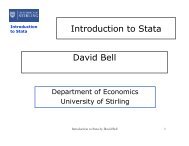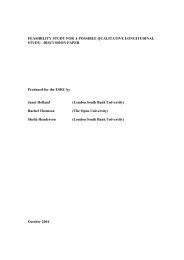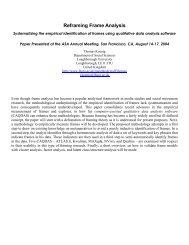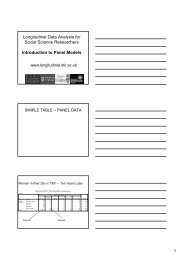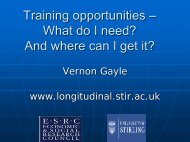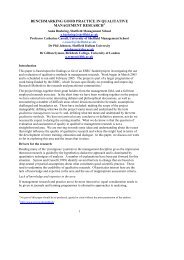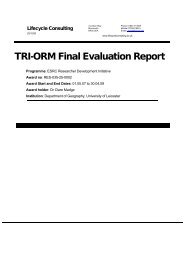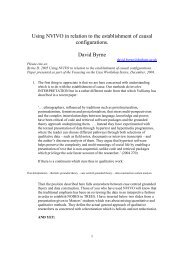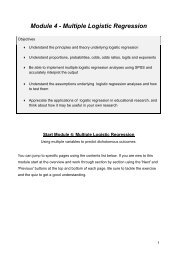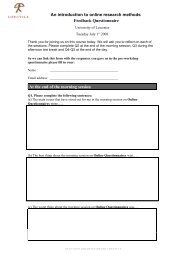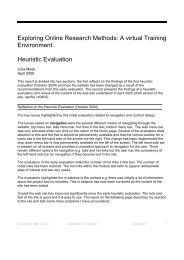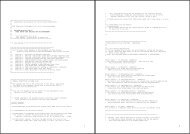You also want an ePaper? Increase the reach of your titles
YUMPU automatically turns print PDFs into web optimized ePapers that Google loves.
Thomas Koenig: Framing Anti-Semitism as Free Speech 8<br />
In contrast, latent class analysis exhibits all required features factor analysis offers, but at<br />
the same time does not contain the same shortcomings, making it very well-suited for the<br />
analysis of quasi-idealtypical concepts (Hagenaars and Halman 1989) such as frames. It<br />
should seem therefore straightforward to introduce it into frame analysis studies. Although<br />
the methodological principles of latent class analysis have been already developed in the<br />
fifties (Lazarsfeld 1950; Hagenaars 1993: 20), it has remained an esoteric statistical method<br />
for many social scientists (Reunanen and Suikkanen 1999: 3). 8<br />
In comparison to cluster analysis, latent class analysis delivers more unequivocal results,<br />
as it allows for a number of well-developed goodness of fit measures. And while it shares<br />
with factor analysis the virtue of operating with latent variables, it does not contain the caveat<br />
of requiring hard to come by interval scaled data. We therefore choose to validate our frame<br />
models with latent class analysis.<br />
Data: The Hohmann Case<br />
We tested the outlined methodology by identifying frames in a recent debate on the treatment<br />
of anti-Semitism in the public sphere in Germany.<br />
In November 2003, the exclusion of a Conservative backbencher MP Martin Hohmann<br />
from the parliamentary faction of the main German conservative party, triggered a lively<br />
debate about the question on the legitimacy of his exclusion against his expressed will.<br />
The debate was triggered by a speech Hohmann gave on the German National holiday in<br />
his electoral district. The core argument of the speech was that Germans are unduly branded<br />
as Tätervolk, a "people of perpetrators." Drawing on the writings of Henry Ford and a<br />
hitherto unknown historian with virtually no academic recognition, Hohmann had claimed<br />
using the standards of those, who consider Germans a Tätervolk, Jews could equally well be<br />
portrayed as Tätervolk, because the latter participated overproportionately in the Russian<br />
Revolution and the crimes of Stalinism.<br />
Initially, the speech had no repercussions for Hohmann. The local paper did report on the<br />
speech, but omitted its anti-Semitic overtones. It took a letter from an American Jew, who<br />
8<br />
Basically, latent class analysis can be considered the equivalent of factor analysis for ordinally and<br />
nominally scaled variables (McCutcheon 1987: 7). It examines, if a set of observable indicators can<br />
meaningfully be projected onto a smaller set of latent, that is, unobservable classes. Most important theoretical<br />
concepts, among them frames, do not translate straightforwardly into easily empirically observable, that is:<br />
measurable, indicators. Latent class analysis that expressly works with latent, read: unobservable, variables<br />
(Lazarsfeld 1950: 363) is therefore in the analysis of frames superior to other log-linear models that operate<br />
exclusively with observable data.



